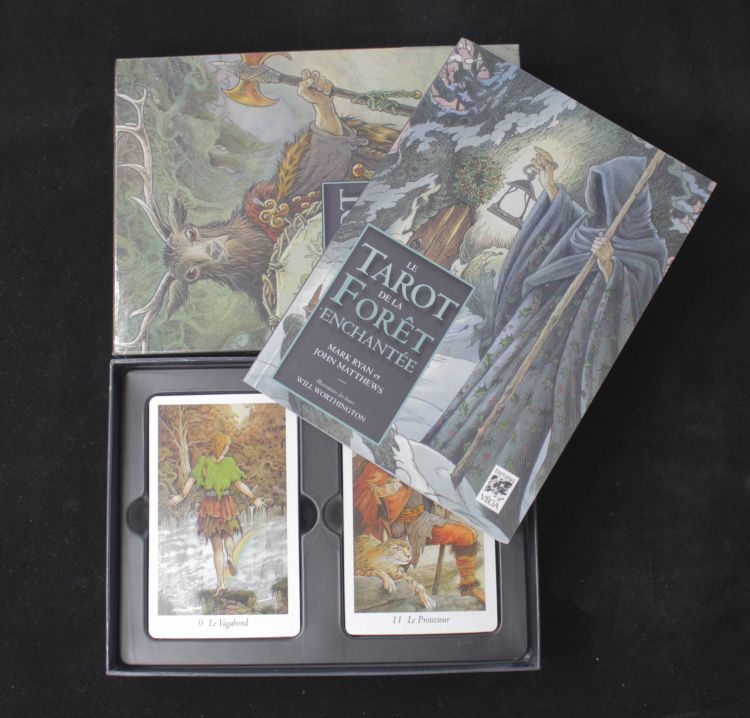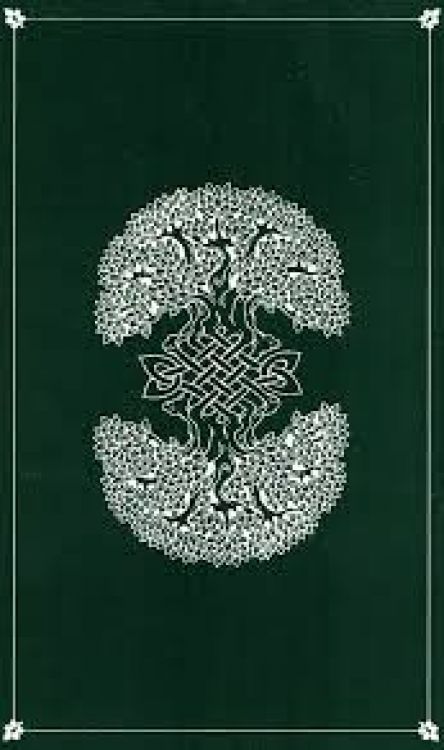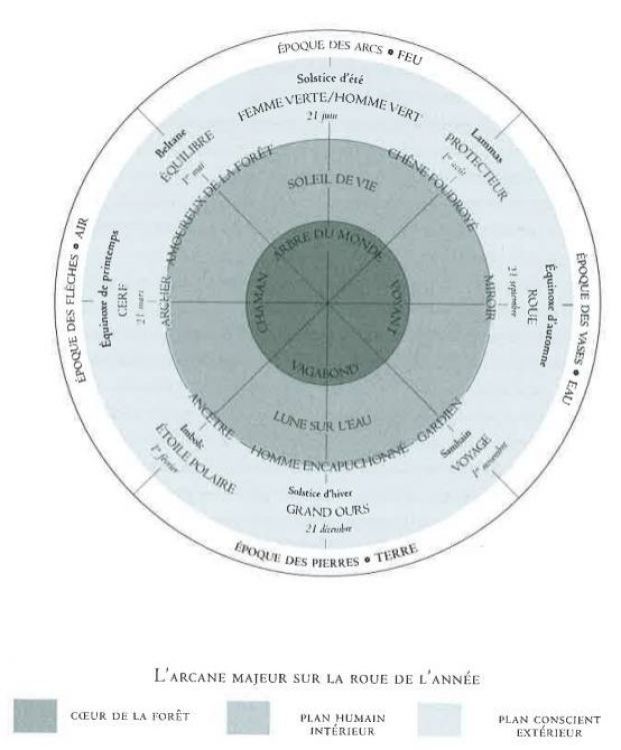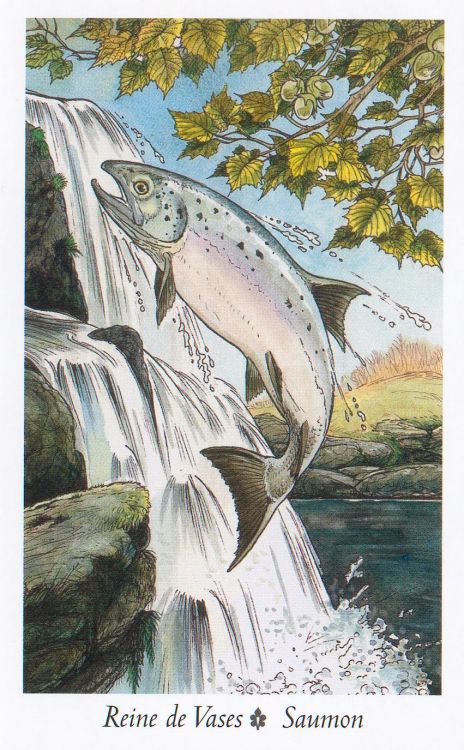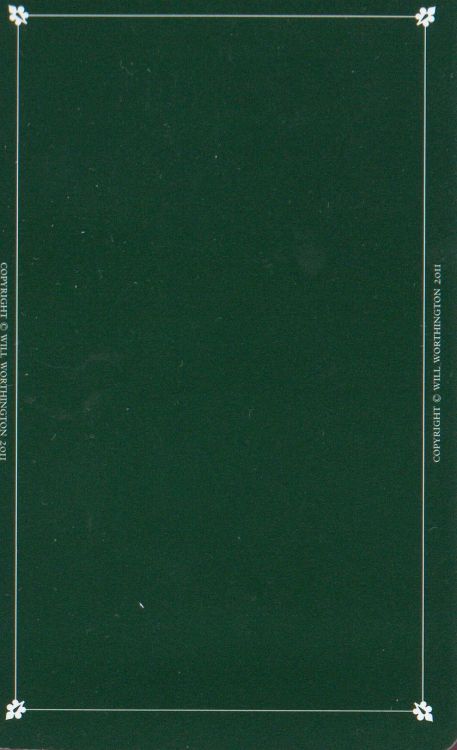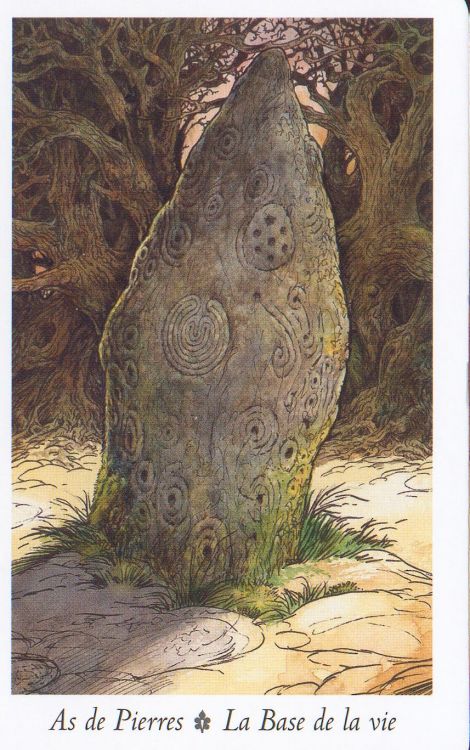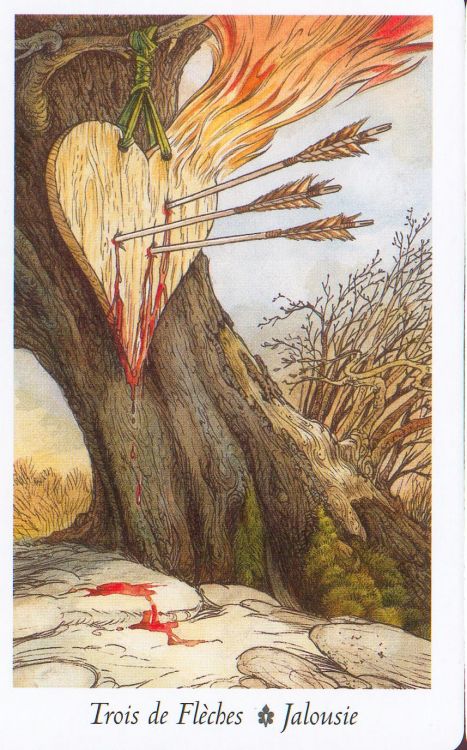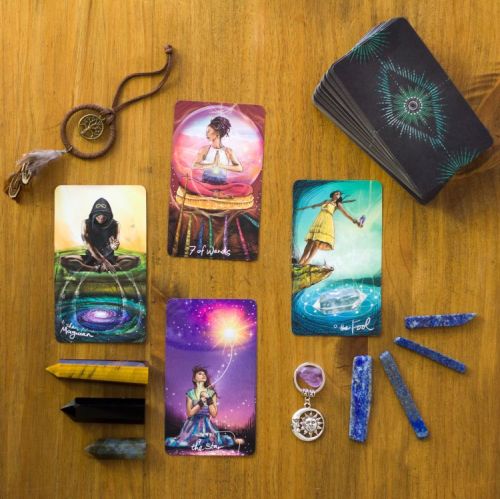The game is beautifully illustrated, which is undoubtedly one of its primary qualities. But here again, this judgement is more a personal taste.
The design of the game is original, the authors do have their own vision of the world, and shows it in the different cards of the game. However, if they had designed an oracle with a specific number of cards and categories of cards, their creation would certainly have gained in clarity and consistency. Let there be no mistake, the game is coherent and successful in the form of a tarot (if we disregard the concept of "the wheel of the year" which is nevertheless a central element). I just think that the game would have revealed its full potential if it had been created in the form of an oracle. By way of comparison, the reader can study Kyle Gray's "Angels and Ancestors oracle", based on the same shamanic but multi-cultural (Celtic, American Indian and Australian Aboriginal) tradition.
The beginner reader may perhaps come up against a text that is sometimes dense with ideas and concepts, but the game remains very accessible except for the 16 court cards that do not have an intuitive reading.
For the confirmed practitioner, the game will find an honorable place in his personal library, it clearly deserves to be used for draws based on the numbered cards of the Minor Arcana. The Major Arcana takes great liberties with respect to the Rider-Waite-Smith or Tarot-de-Marseille tradition, one likes or dislikes it.
To learn more and deepen your knowledge of tarot, check out my article on the meanings of the 78 tarot cards or on the 22 Trumps (major arcana).
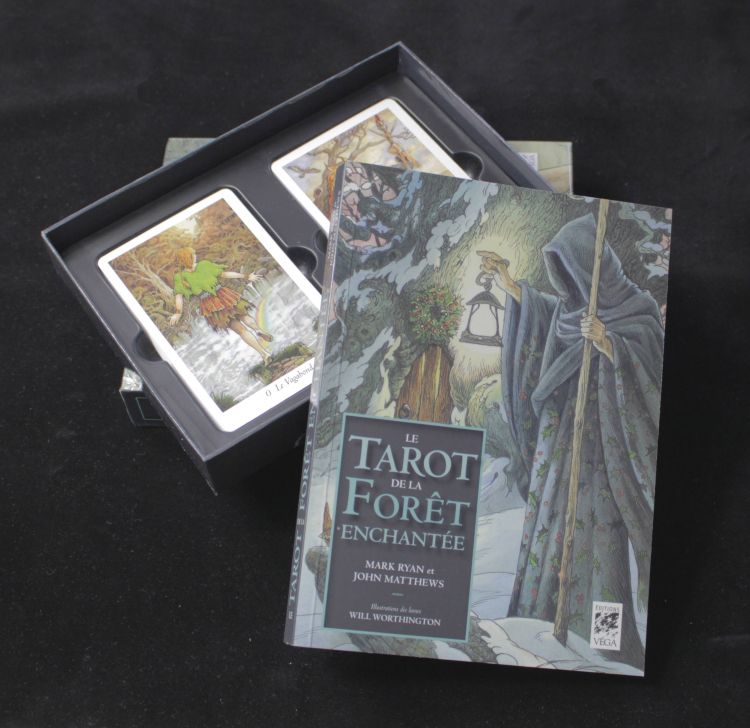
 Please note that this review is based on material and product in French. Depending on the edition you buy, the material could be identical, but also different on the packaging, the guidebook, the booklet, or the card stock . I'm sorry I can't systematically buy tarot cards and books in all editions (I don't receive gifts from publishers)! 😅
Please note that this review is based on material and product in French. Depending on the edition you buy, the material could be identical, but also different on the packaging, the guidebook, the booklet, or the card stock . I'm sorry I can't systematically buy tarot cards and books in all editions (I don't receive gifts from publishers)! 😅 